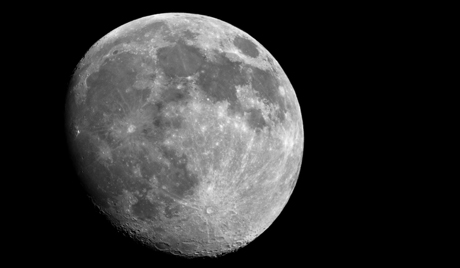
 Russia is planning to increase its share on the world market of space technologies from the current 10% to 16% within the next 8 years. However, for this, Russia’s rocket- and satellite-producing capacities should be increased twice in comparison with the current situation.
Russia is planning to increase its share on the world market of space technologies from the current 10% to 16% within the next 8 years. However, for this, Russia’s rocket- and satellite-producing capacities should be increased twice in comparison with the current situation.
This is what Russia’s recently adopted state program of space exploration for the period from 2013 to 2020 says.
This document has been adopted after Russia had suffered several misfortunes in space exploration. Namely, Fobos-Grunt, an attempted Russian sample return mission to Phobos, one of the moons of Mars, ended with a failure. Besides, several recent launches of Russian satellites were also abortive.
Now, one of Russia’s new plans is to build a heavy rocket system, which will be called "Angara” (after a river in Siberia), and launch it from Russia’s new cosmodrome "Vostochny”. The two old cosmodromes, "Plesetsk” (in Russia) and "Baykonur” (in Kazakhstan, but rented by Russia) will be considerably modernized. It is also planned that by 2018, the number of Russia’s modules at the International Orbital Station will be increased from the current 5 to 7. Besides, Russian satellite navigation system "GLONASS” will acquire a higher precision rate – up to 0.6 meters.
Russia is also planning to launch three satellite observatories to the orbit and to further explore the Moon. For this purpose, Russia will land two stations – "Luna-Globe” and "Luna-Resource” on the Moon. It is also planned to organize a mission to deliver samples of the Moon’s ground to the Earth.
Speaking about the prospects of flying to other planets, Russia is planning to create a device that would be able to deliver people to the Moon by 2020.
"However, this doesn’t mean that Russia is planning to send people to the Moon already in 2020,” Russian expert in cosmonautics Academician Alexander Zheleznyakov says. "It is only planning to create a device, that would be able to deliver people to the Moon, by 2020.”
"The flight itself will take place after 2020,” Academician Zheleznyakov continues. "Until now, the only thing which is already certain about this project is who will finance the creation and the construction of the spaceship. It is not yet certain what type of rocket will take this ship to space. I hope that this will be known when engineers finish working on the creation of the ship.”
Another Russian expert in cosmonautics, Yuri Karash, says that if Russia is planning to create a spaceship for flying to the Moon, it should also think of a device that would allow the cosmonauts to land on the Moon. There would be little use in coming very close to the Moon without landing on it, the scientist believes.
It is not yet known either how Russia will deliver samples of the Moon’s ground to the Earth. The construction of the "Luna-Globe” and "Luna-Resource” stations does not envision a return of these stations back to Earth, Mr. Karash says.
"However, there is nothing bad in the fact that Russia’s newly adopted program of space exploration does not specify these details,” Academician Alexander Zheleznyakov says. "The program, after all, is meant only to outline the main features of Russia’s space plans for the foreseeable future. And the main task now is to create a space industry infrastructure in Russia that would compensate all our recent misfortunes with launching satellites.”
For this purpose, it is planned that 5 new holdings for producing space equipment will be created in Russia.



_jpg/250px-ElbeDay1945_(NARA_ww2-121).jpg)







